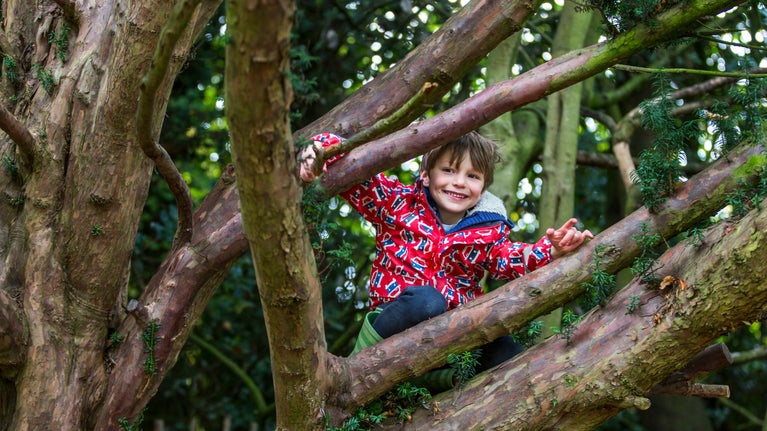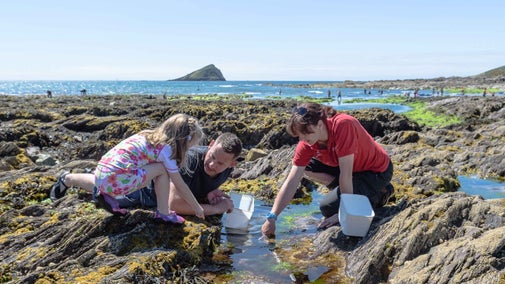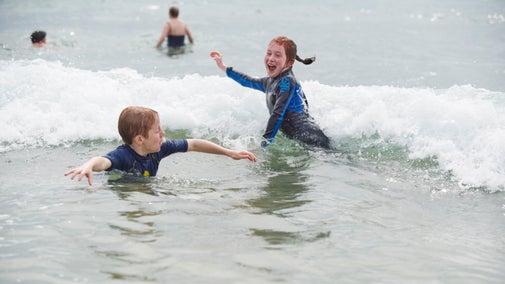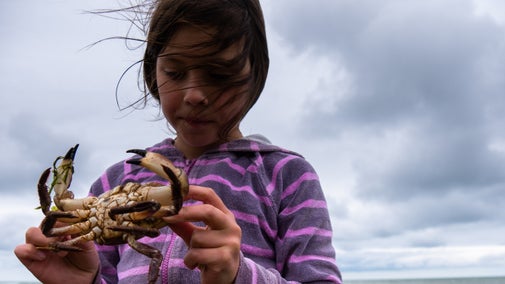
‘50 things to do before you're 11¾’
Have fun exploring nature and the great outdoors with our list of ‘50 things to do before you're 11¾’.

As the tide goes out, the secrets of the sea are revealed in the rock pools left behind. Head to the beach to discover what lurks in these tiny pockets of ocean life. Our pictures will help you identify the creatures you find.
You can go rock-pooling at any time of year but the best time to go is from late spring to early autumn. This is when the weather is kindest.
It’s best to go on a day when it’s dry and calm, so the surface of the rock pools are still and it’s easier to see what’s beneath. It can get chilly too, so take a warm jumper or a coat. A small first aid kit is also a good idea, to deal with cuts and scrapes.
The rock pools closest to the water will be alive with creatures, like fish, crabs and interesting plant life. Peer closely into the water. You might find your own reflection looking back at first, so you’ll have to crouch down close and stay still for a little while. Can you see anything darting about near the top? Or is there something moving slowly at the bottom? How many different colours can you spot?
Rocks can be a great hiding place for beach-loving creatures. Can you spot anything living above and around your pool? How do the rocks feel? Can you find any shells, fossils or cracks? Peek inside crevices and you might discover something looking right back at you.
It’s a good idea to take a bucket or a tub so you can take a closer look at what you find. Put your bucket slowly into the water and see what swims inside. Or you could push it gently through the water to scoop up a critter. Is there anything surprising in your bucket? Make a quick sketch, take a photo or write down your findings in a nature diary.
Many rock pool creatures are small and delicate, so it’s best to avoid using a net in case they become tangled and hurt. Search for some seaweed or other plant life with your hands. Can you describe its texture or smell? It’s important to pop your creatures back where they came from after a short time, so they can carry on with their day.
Make sure you check with an adult before you set off and wear shoes with a good grip. Old trainers, wellies or wetsuit boots with a thick sole are ideal. Flip-flops might make you stumble. Remember that wet seaweed can be very slippery. Move slowly and carefully.
It’s important to check the tide times for your chosen beach – you don’t want to be caught out by the sea coming in. The best time to set out is before low tide: this is when you’re likely to find lots of rock pools and you'll have the most time to explore.
Discover daily tide times for your location from websites such as Tide Times and BBC Weather.

Have fun exploring nature and the great outdoors with our list of ‘50 things to do before you're 11¾’.
Rock-pooling is a great way to get closer to nature. Discover the best places with rock pools to find sea animals like starfish, crabs and anemones at the beaches and coasts we care for.

Swimming in the sea, no. 42 of our ‘50 things to do before you’re 11¾’, is a brilliant experience. Follow our tips to help you have the best time.

Learn how to pick up a scuttling crab without being pinched and other crab facts. It's no. 39 of our ‘50 things to do before you’re 11¾’.

To ensure you can complete your ‘50 things to do before you’re 11¾’ activities safely, here are some top tips to help you complete your challenges with safety in mind.
